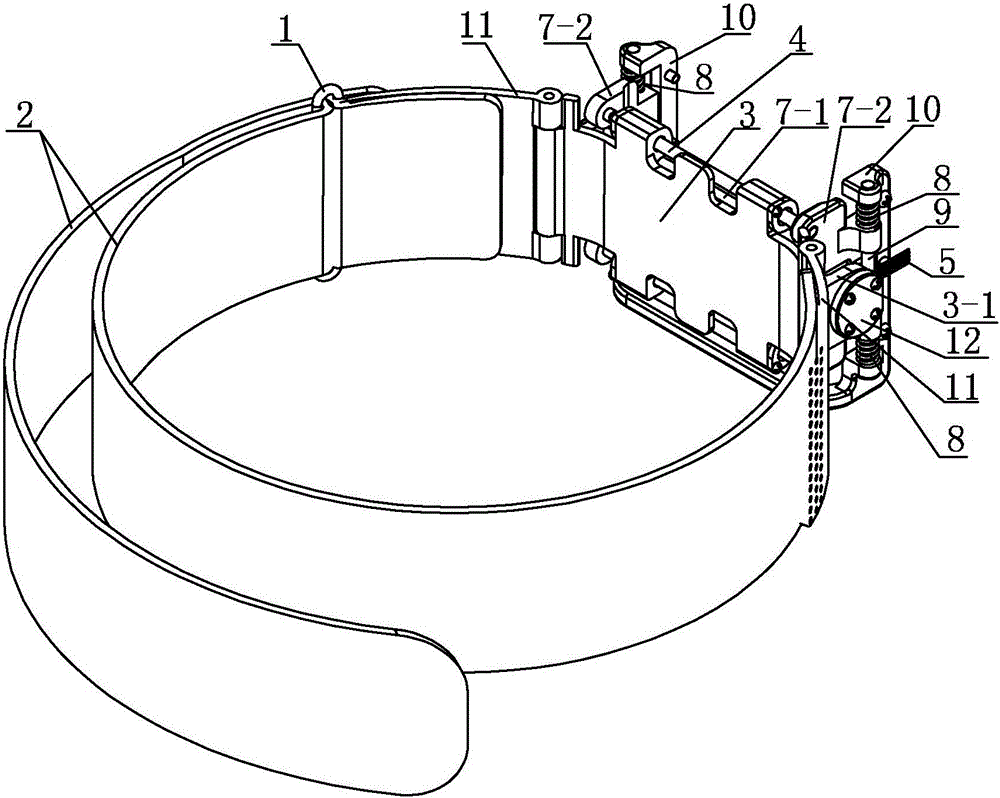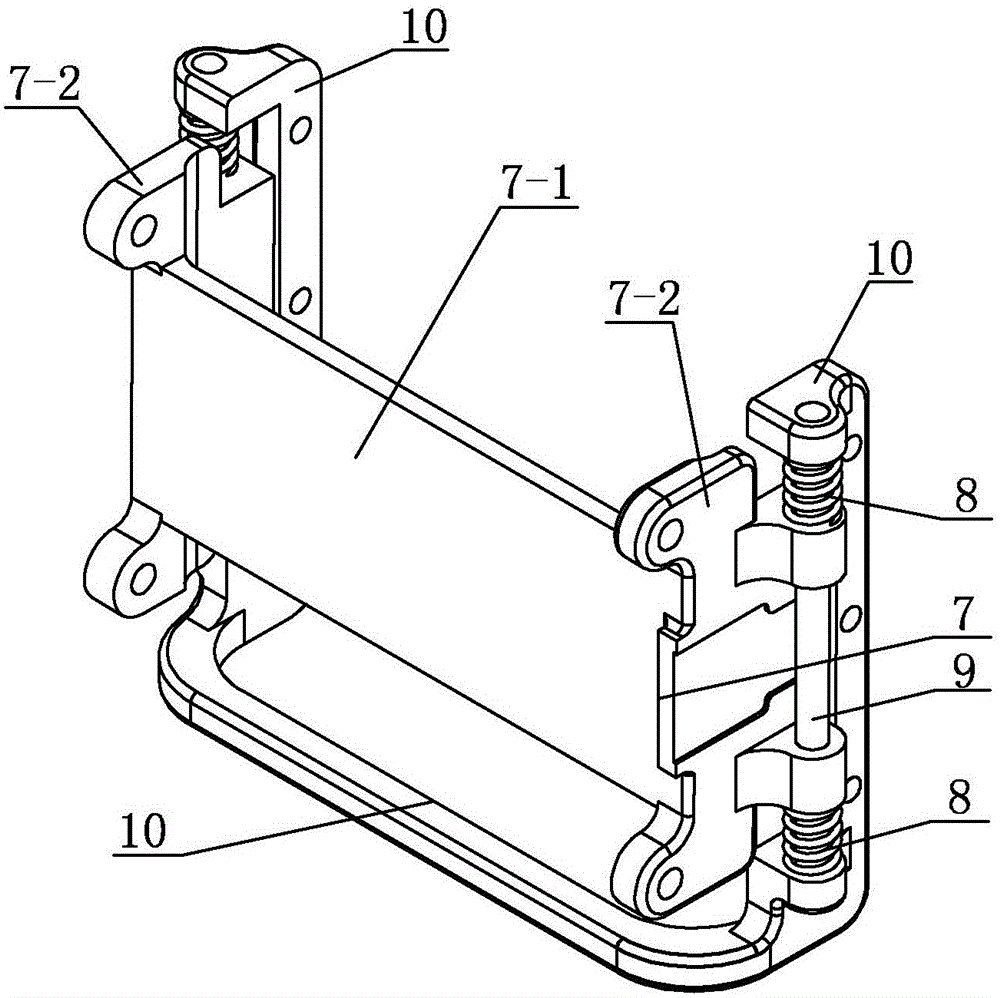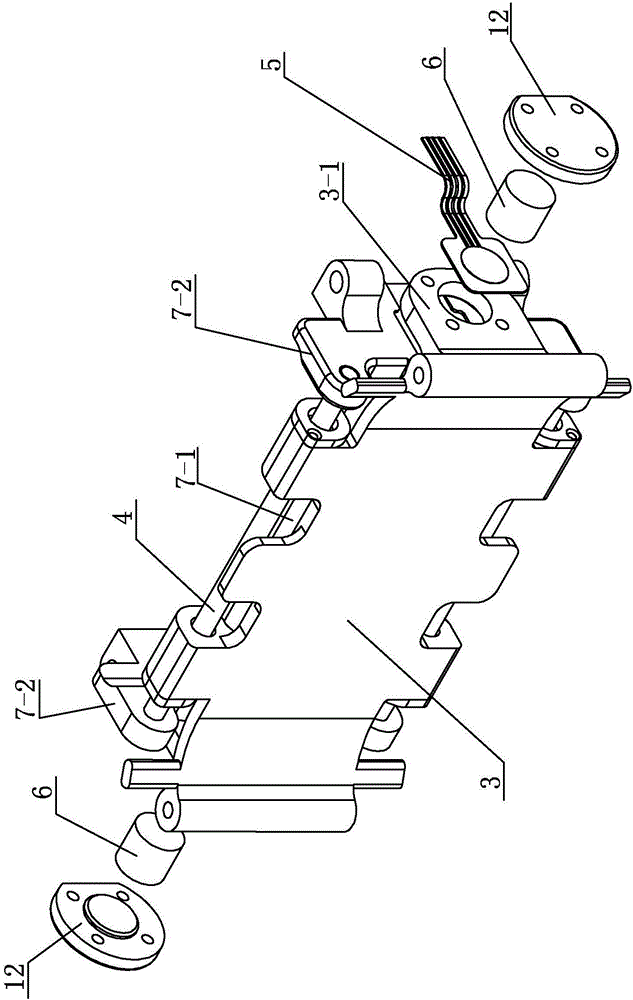A wearable device for detecting position deviation
A wearable device and position detection technology, which is applied in the field of robotics, can solve the problems of position deviation detection method, poor comfort of wearable devices, coupling of measurement results, etc., and achieve the effects of eliminating coupling force, improving detection accuracy, and accurate measurement results
- Summary
- Abstract
- Description
- Claims
- Application Information
AI Technical Summary
Problems solved by technology
Method used
Image
Examples
specific Embodiment approach 1
[0015] Specific implementation mode one: combine Figure 1-Figure 3 Describe this embodiment, a wearable device for detecting position deviation in this embodiment includes a binding mechanism, a position deviation detection mechanism and a sliding mechanism; the binding mechanism includes a binding belt 2, a fixing ring 1 and two binding plates 11; The position deviation detection mechanism includes a sliding plate 3, a film pressure sensor 5, two rubber columns 6, two end covers 12 and two first support shafts 4; the sliding mechanism includes a binding base 7, a fixing seat 10, Two second support shafts 9 and four elastic components 8;
[0016] The binding base 7 is provided with a substrate 7-1, the two ends of the binding base 7 are provided with connecting plates 7-2, and the two connecting plates 7-2 are vertically arranged side by side, and the board surfaces of the two connecting plates 7-2 Perpendicular to the base plate 7-1, two second support shafts 9 are vertical...
specific Embodiment approach 2
[0018] Specific implementation mode two: combination figure 1 To describe this embodiment, the two binding plates 11 in this embodiment are nylon plates. Such an arrangement has high strength and good toughness, is convenient for fixing the wearable device, and also improves comfort. Others are the same as in the first embodiment.
specific Embodiment approach 3
[0019] Specific implementation mode three: combination figure 1 To describe this embodiment, the two binding plates 11 in this embodiment are ABS plastic binding plates. Such an arrangement has high strength and good toughness, is convenient for fixing the wearable device, and also improves comfort. Others are the same as in the first embodiment.
PUM
 Login to View More
Login to View More Abstract
Description
Claims
Application Information
 Login to View More
Login to View More - R&D
- Intellectual Property
- Life Sciences
- Materials
- Tech Scout
- Unparalleled Data Quality
- Higher Quality Content
- 60% Fewer Hallucinations
Browse by: Latest US Patents, China's latest patents, Technical Efficacy Thesaurus, Application Domain, Technology Topic, Popular Technical Reports.
© 2025 PatSnap. All rights reserved.Legal|Privacy policy|Modern Slavery Act Transparency Statement|Sitemap|About US| Contact US: help@patsnap.com



